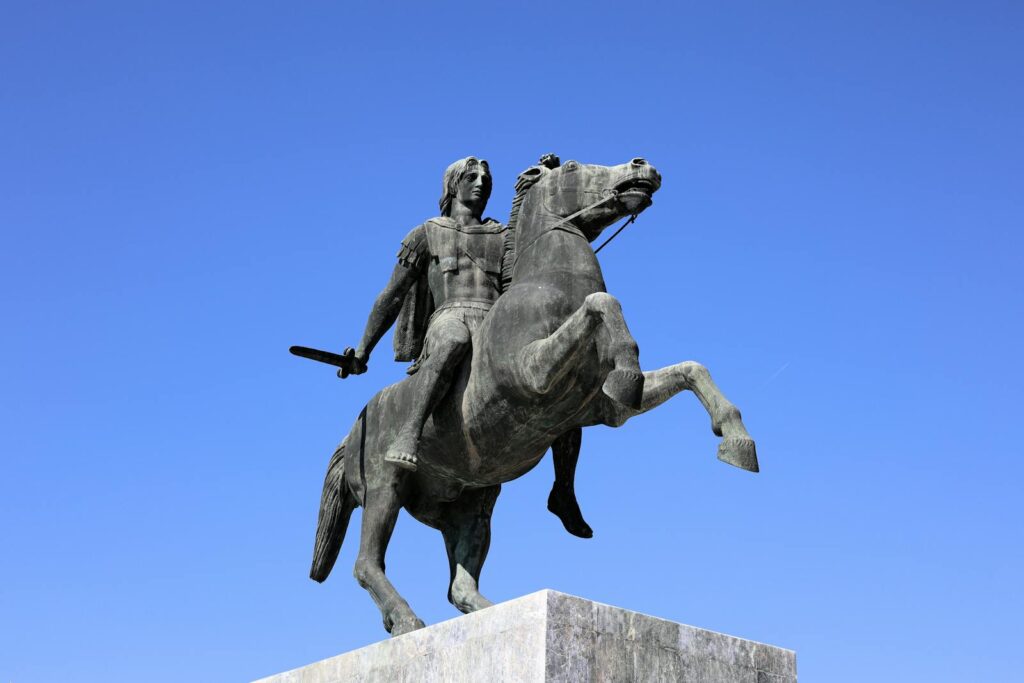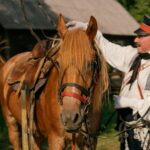Few partnerships in history have been as legendary as that between Alexander the Great and his beloved horse, Bucephalus. This magnificent black steed wasn’t merely a mode of transportation for one of history’s greatest conquerors—he was a companion, a confidant, and a crucial element of Alexander’s military success. Their story spans nearly two decades and thousands of miles, from the rolling hills of Macedonia to the distant plains of India. Beyond the battlefield, their relationship exemplifies the profound bond that can form between humans and animals, transcending the typical master-and-mount dynamic to become something far more meaningful. The tale of Bucephalus and Alexander continues to captivate our imagination thousands of years later, offering insights into both the character of a legendary ruler and the extraordinary capabilities of a remarkable horse.
The Origins of a Legend
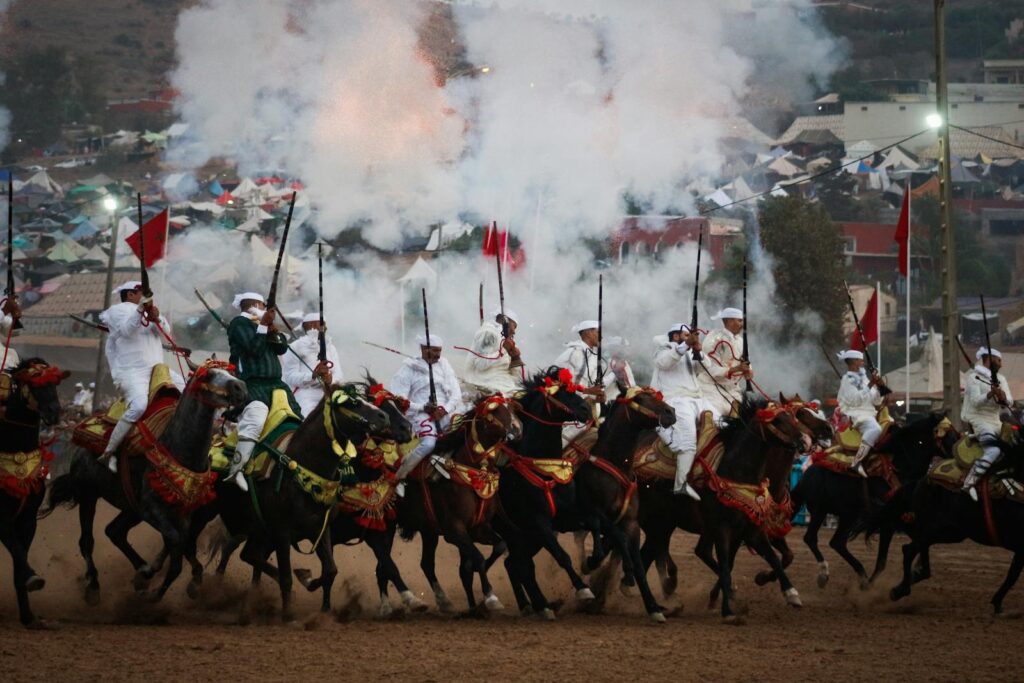
Bucephalus was reportedly born in 355 BCE in the region of Thessaly, an area renowned throughout the ancient world for producing exceptional horses. According to historical accounts, the horse was brought to King Philip II of Macedon’s court by a trader named Philonicus the Thessalian, who offered the remarkable animal for the enormous sum of 13 talents (equivalent to hundreds of thousands of dollars today). The horse’s name itself provides insight into his appearance—”Bucephalus” derives from Greek words meaning “ox-headed,” likely referring to a distinctive facial marking or his unusually broad forehead. Contemporary descriptions suggest he was primarily black with a large white star on his forehead, creating a striking appearance that matched his temperament. Before becoming Alexander’s companion, Bucephalus was considered wild and unmanageable—a reputation that would soon change dramatically.
The Famous Taming
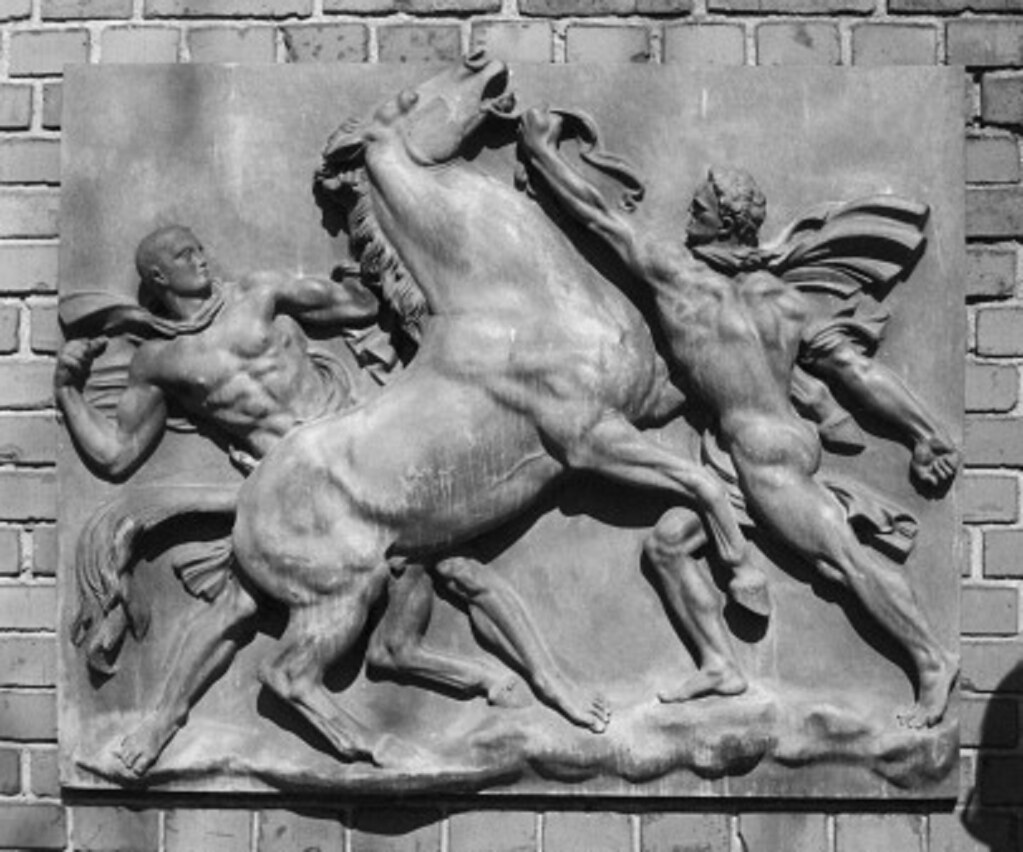
The most celebrated chapter in the early story of Bucephalus occurred when Alexander was approximately 12 or 13 years old, as King Philip’s courtiers struggled to tame the spirited horse. According to Plutarch’s historical account, Philip’s handlers deemed the horse unrideable and uncontrollable after multiple failed attempts to mount him. The young Alexander, however, observed something the others had missed—the horse appeared to be frightened of his own shadow. With remarkable insight beyond his years, Alexander asked for a chance to tame the magnificent beast, making a bold wager with his father that he could succeed where others had failed. Turning Bucephalus toward the sun so his shadow fell behind him, Alexander spoke gently while gradually approaching the nervous animal. With calm confidence, he removed his cloak, smoothly mounted the horse, and rode him successfully around the court, much to the astonishment of King Philip and his assembled courtiers. This moment is often cited as the first evidence of Alexander’s exceptional character and destiny for greatness.
Physical Characteristics and Appearance
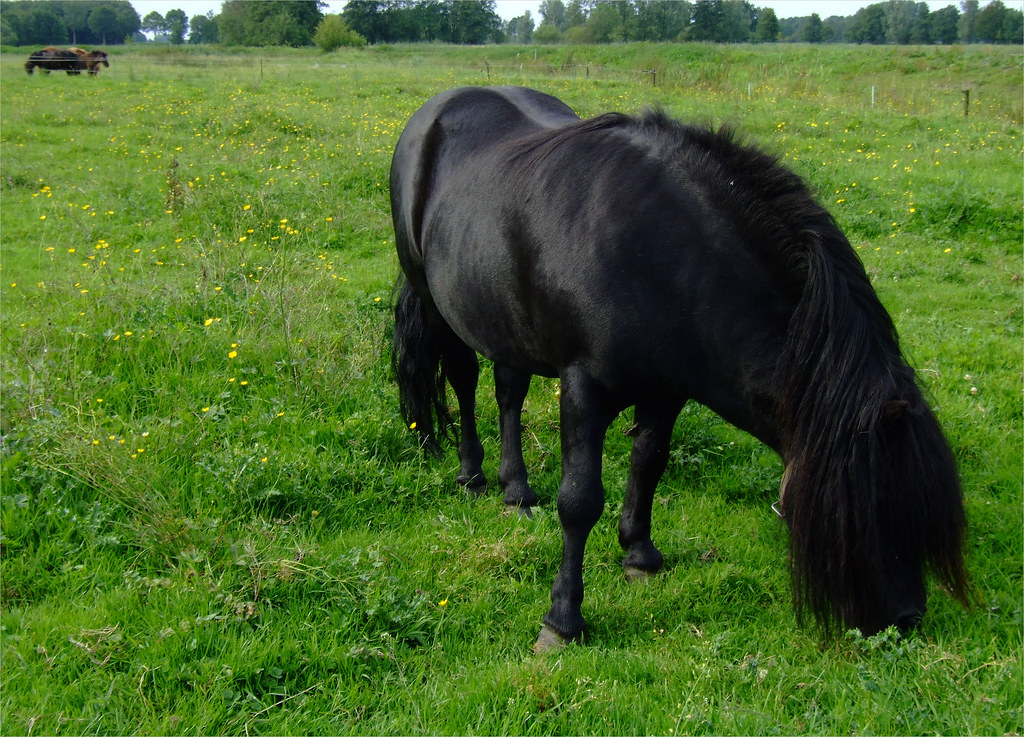
Bucephalus possessed a distinctive appearance that set him apart from ordinary horses of the era. Historical accounts describe him as unusually large and powerful, standing approximately 15 to 16 hands high (about 5–5.3 feet at the shoulder), which was considered impressive for ancient breeds. His coat was predominantly black with a notable white star on his forehead, creating a striking contrast that enhanced his presence. Some accounts mention a particularly broad head and strong neck, giving him an imposing profile that suited his role as a warhorse. Ancient writers also noted his deep chest and powerful legs—physical traits that contributed to his legendary stamina. Though artistic depictions vary, most ancient representations show Bucephalus as muscular and athletic, with alert eyes and a proud bearing befitting the mount of a king.
A Superstitious Streak
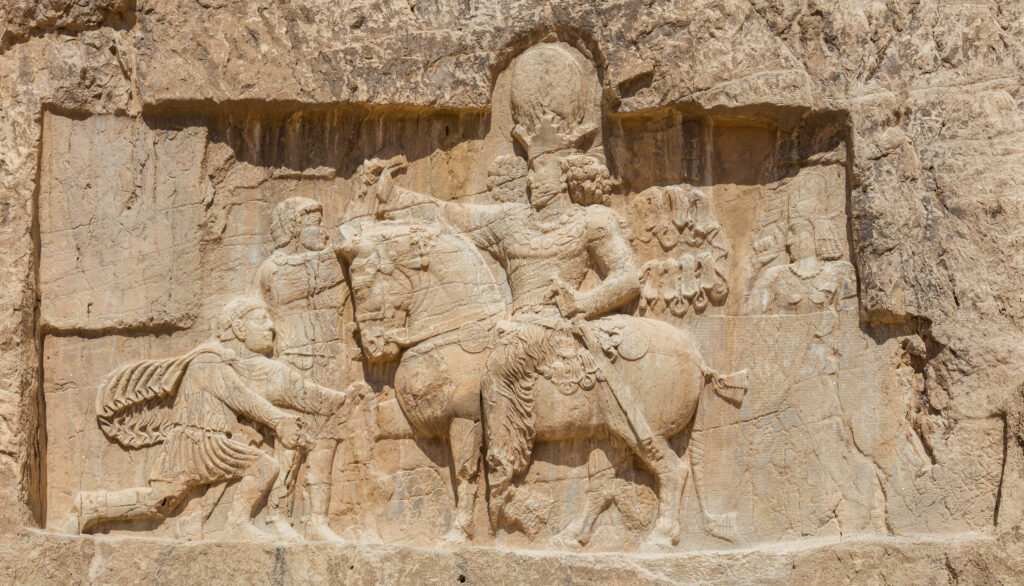
One of the most fascinating aspects of Bucephalus’s temperament was his apparently nervous or superstitious nature, which initially made him difficult to manage. His famous fear of his own shadow demonstrates an unusual sensitivity not commonly addressed in ancient accounts of horses. Some historians suggest this heightened awareness may have actually benefited Alexander in battle, as the horse would have been more alert to threats or changes in the environment. Ancient sources also mention that Bucephalus would kneel to allow Alexander to mount more easily—a behavior that was considered remarkable and indicated exceptional training or intelligence. Despite his initial fearfulness, once bonded with Alexander, Bucephalus reportedly became fearless in battle, charging into arrays of enemy weapons without hesitation. This transformation underscores the special relationship that developed between the animal and his rider.
Companion Through Conquest
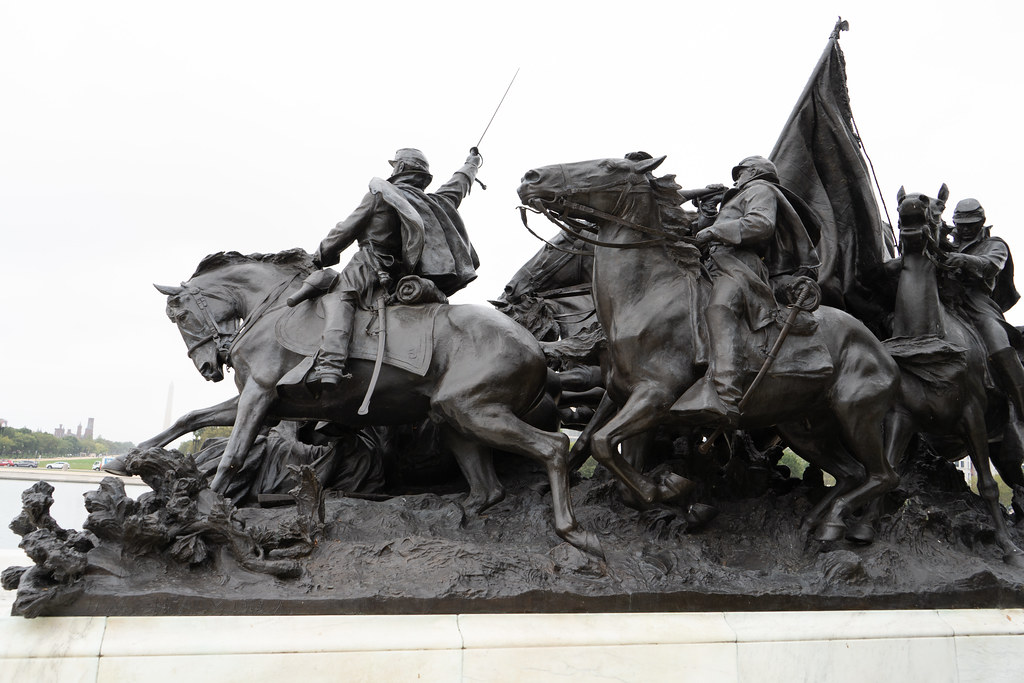
As Alexander launched his campaign against the Persian Empire in 334 BCE, Bucephalus was by his side, serving as his primary mount in numerous critical battles. The horse carried Alexander through pivotal confrontations at Granicus River, Issus, and Gaugamela—engagements that dismantled the Persian Empire and established Alexander’s dominance. During these intense military encounters, Bucephalus showed extraordinary courage, carrying his master directly into enemy formations. Historical accounts suggest Alexander trusted Bucephalus completely, allowing him to focus on commanding troops rather than managing his horse. Their seamless partnership contributed significantly to Alexander’s success, enabling him to execute complex maneuvers with confidence. Together, they crossed thousands of miles of diverse terrain, from the mountains of Anatolia to the deserts of Egypt and beyond.
Exclusive to Alexander
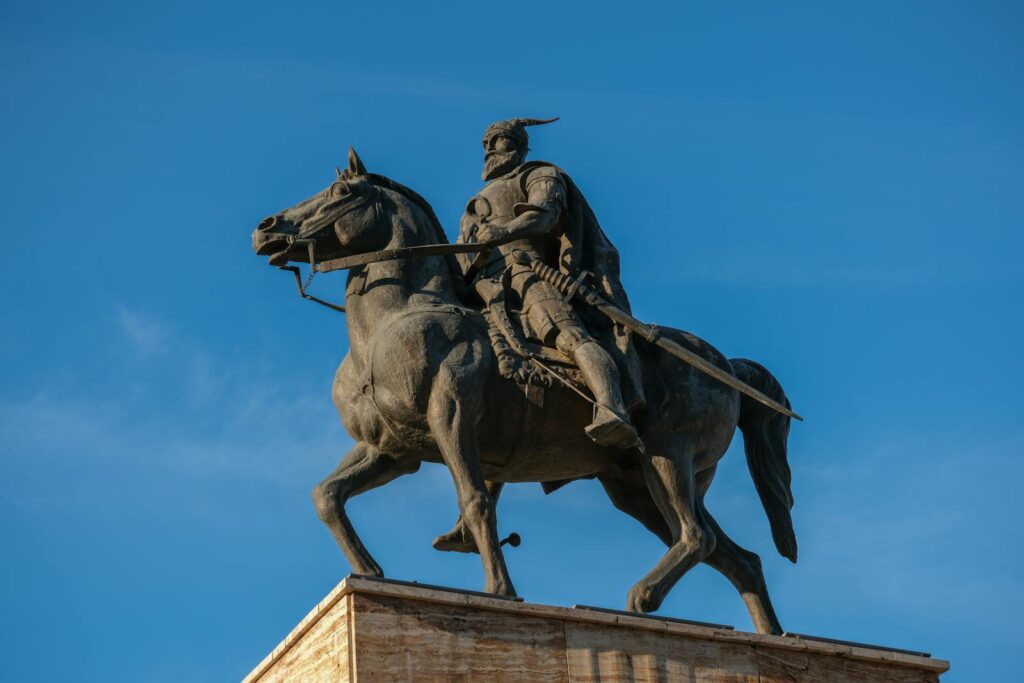
One of the most remarkable aspects of Bucephalus’s relationship with Alexander was his loyalty and selectivity. According to multiple historical sources, including Plutarch, Bucephalus allowed only Alexander to ride him once their bond had formed. When others attempted, he resisted—sometimes aggressively or simply by refusing to move. This exclusivity reinforced their connection, elevating it beyond the typical rider-and-horse dynamic of the ancient world. Some accounts suggest that Bucephalus could even recognize Alexander in full armor amidst the preparations for war. This singular devotion contributed to the mythic quality of their relationship, hinting that Bucephalus saw something unique in his master—a recognition of destiny. His selectivity became a symbol of Alexander’s exceptional nature.
The Final Battle
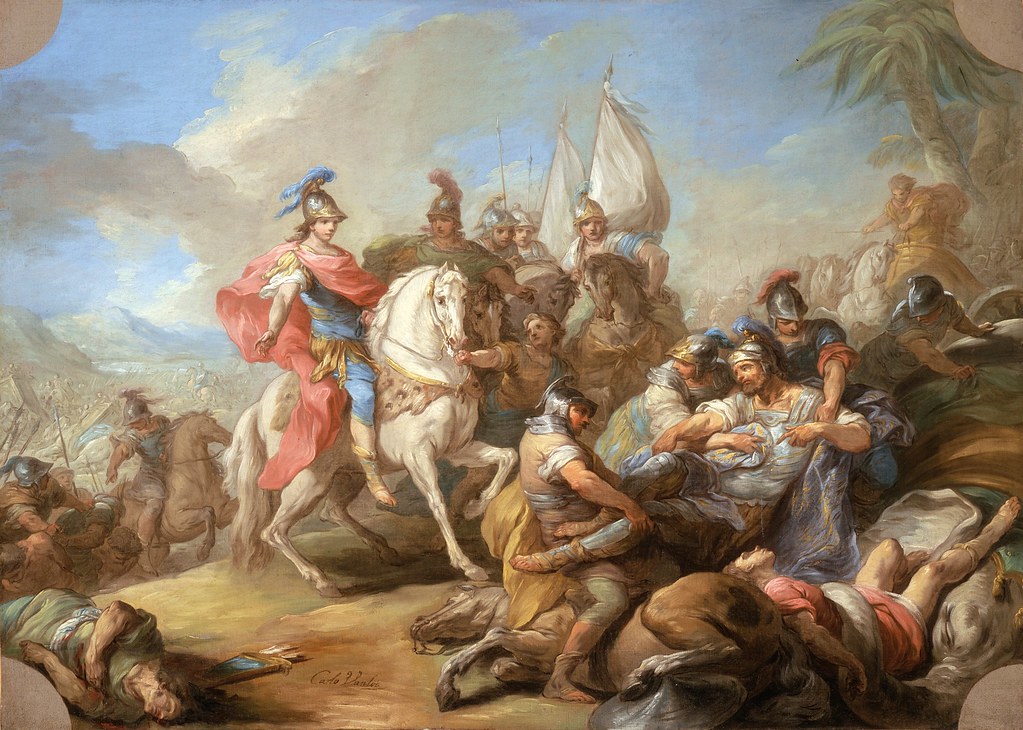
After years of loyal service, Bucephalus’s final campaign came during Alexander’s Indian expedition. In 326 BCE, Alexander faced King Porus at the Battle of the Hydaspes River—a test for both the aging horse and his master. By then, Bucephalus was nearly 30 years old, an advanced age for any horse, let alone one that had endured the rigors of constant military travel. Despite this, historical accounts state that he performed admirably, navigating river crossings and facing unfamiliar war elephants that spooked many in Alexander’s cavalry. Some suggest that the physical strain of this battle, combined with his age, may have led to a decline in health. The Battle of the Hydaspes marked the final chapter in their military partnership and showcased the horse’s unwavering courage even at the end of his life.
Death and Memorial
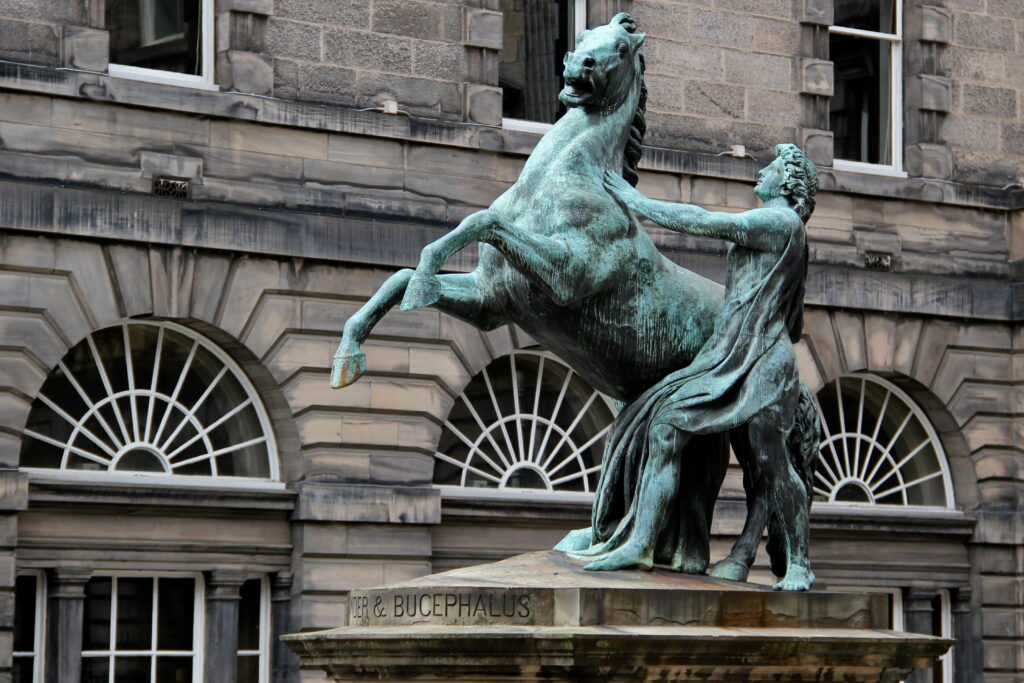
In 326 BCE, following the Battle of the Hydaspes in what is now Pakistan, Bucephalus died at the approximate age of 30. Ancient sources vary slightly—some say he died from battle wounds, others from old age and exhaustion. Regardless, Alexander’s response to his companion’s death revealed the depth of their bond. He reportedly grieved openly, mourning Bucephalus as one would a fallen friend. To honor him, Alexander founded a city at the site of the horse’s death, naming it Bucephala (or Bucephalia). This tribute—founding a city in memory of a horse—was unprecedented and emphasized the horse’s unique place in Alexander’s life. Located along the Hydaspes River in the Punjab region, the city marked the eastern edge of Alexander’s conquests and ensured that Bucephalus’s name would endure.
Cultural Impact in the Ancient World
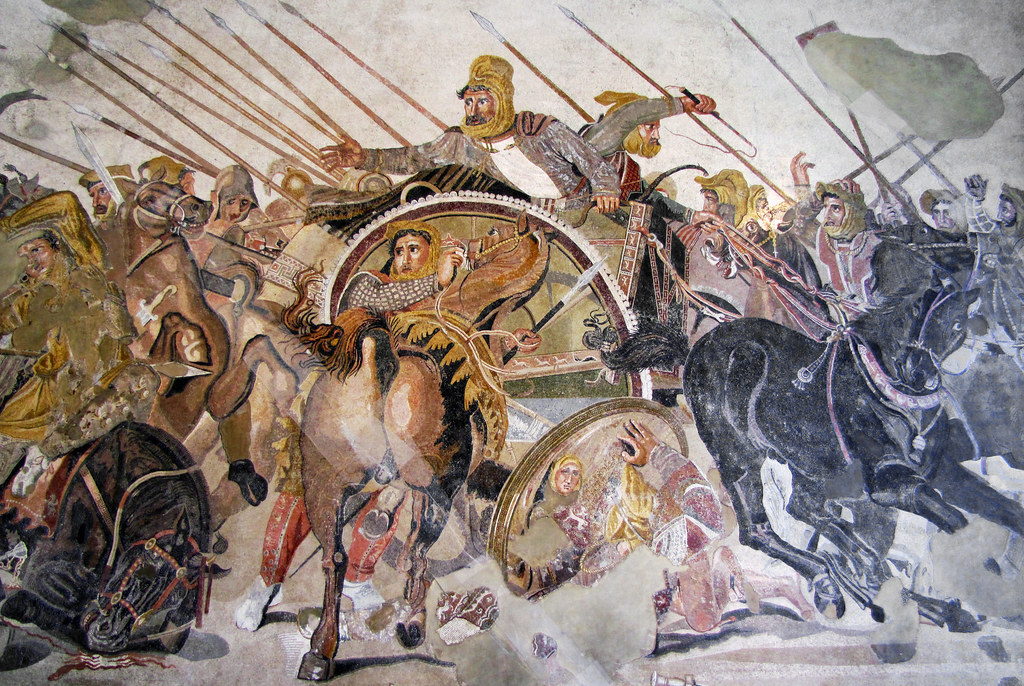
The story of Alexander and Bucephalus quickly transcended history to become part of Alexander’s mythic legacy. Artists frequently portrayed Alexander astride his black steed, creating iconic images that spread across the empire. The famous Alexander Mosaic from Pompeii shows the king riding Bucephalus into battle against Darius III, immortalizing both in one of antiquity’s most recognized military scenes. In literature, the tale of taming the untamable horse became a symbol of character and destiny. Greek and Roman writers often referenced Bucephalus when discussing great horses, establishing him as a standard for warhorses. The legend reached beyond the Greek world, appearing in Persian, Indian, and Arabic stories, each adapting it to highlight different elements of the powerful bond between man and horse.
Bucephalus in Medieval and Renaissance Tradition
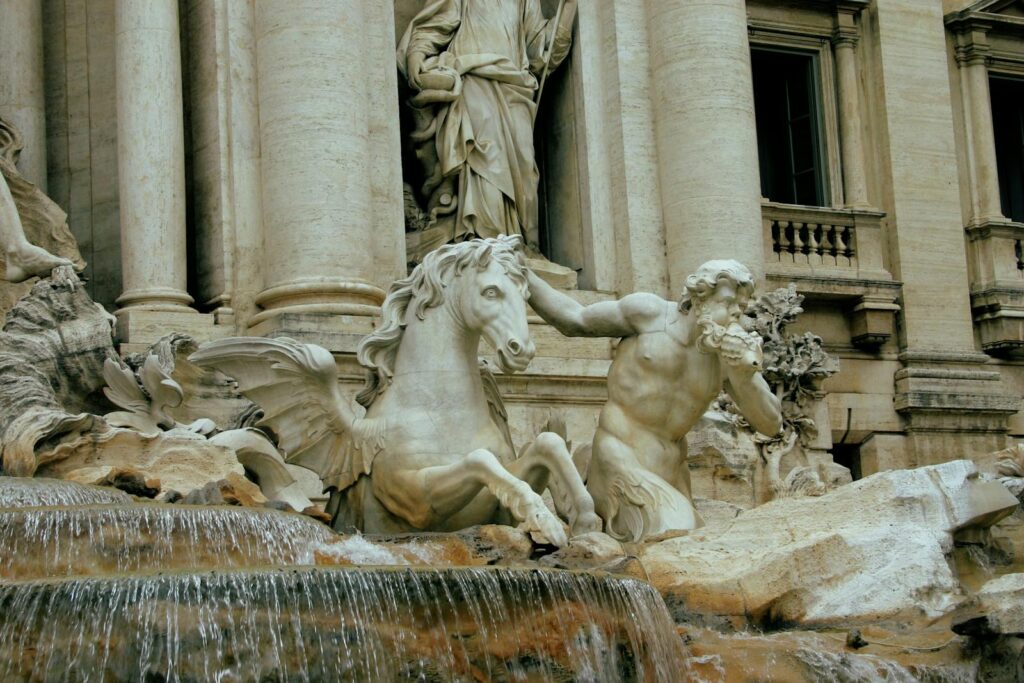
The legend of Bucephalus evolved through the medieval and Renaissance periods. The Alexander Romance, a popular collection of tales, introduced fantastical elements—sometimes depicting Bucephalus with magical traits or even as a speaking creature. In medieval Europe, Alexander and Bucephalus were reimagined in knightly armor, with the horse portrayed as the ideal charger of a chivalric hero. During the Renaissance, renewed interest in classical history brought more grounded representations, though often with symbolic depth. Artists like Albrecht Dürer and Leonardo da Vinci studied ancient texts and created works inspired by the famous horse, helping preserve his legacy through detailed depictions of equine anatomy and form.
Scientific and Historical Perspectives
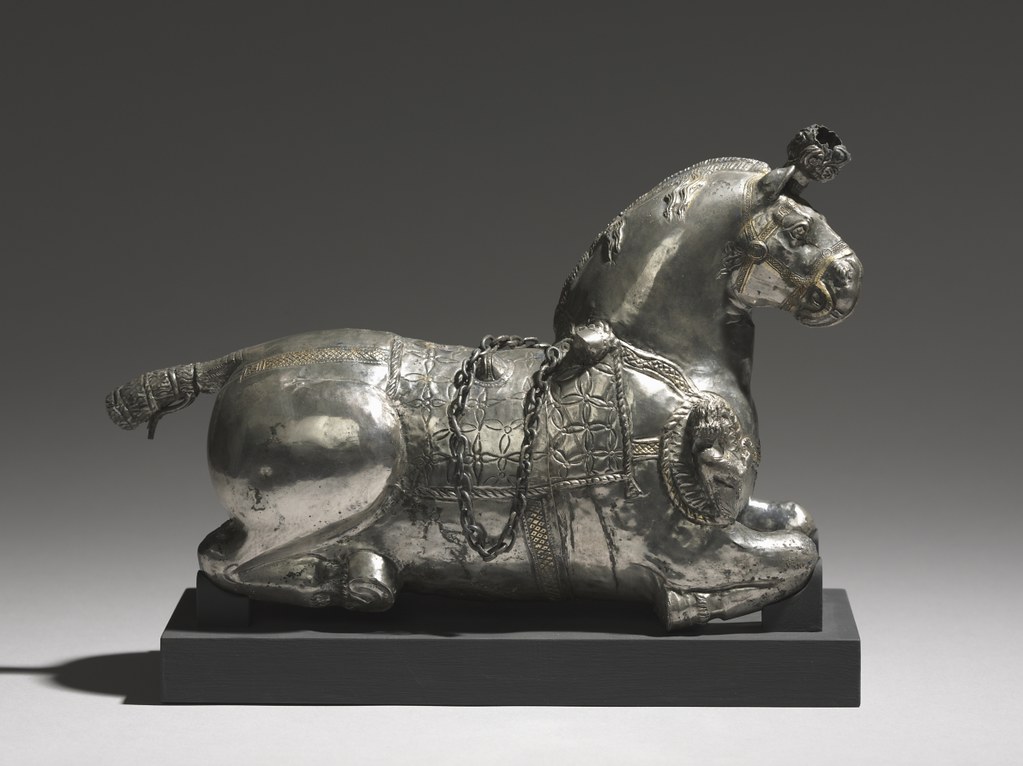
Modern historians and archaeologists have attempted to separate fact from fiction in the Bucephalus narrative, analyzing ancient accounts with a contemporary understanding of horse behavior and biology. Based on descriptions of his appearance and origin, some equine historians suggest Bucephalus may have belonged to the now-extinct Nisean breed, prized warhorses from ancient Persia known for their size, strength, and distinctive appearance. Archaeological excavations in the Punjab region have sought to identify the location of Bucephala, with some promising sites discovered that align with ancient descriptions of the city’s placement along the Hydaspes (modern Jhelum) River. Modern veterinary experts note that Bucephalus’s reported age of 30 years at death would have been exceptional for a horse of that era, particularly one that endured the physical demands of constant warfare and travel across challenging terrain. Some scholars have suggested that Alexander’s unusual treatment of Bucephalus—including the horse’s exclusive diet and special care—may have contributed to his longevity. Contemporary military historians particularly value accounts of Bucephalus for the insights they provide into ancient cavalry tactics and the importance of the relationship between warrior and mount in pre-mechanized warfare.
Bucephalus in Popular Culture
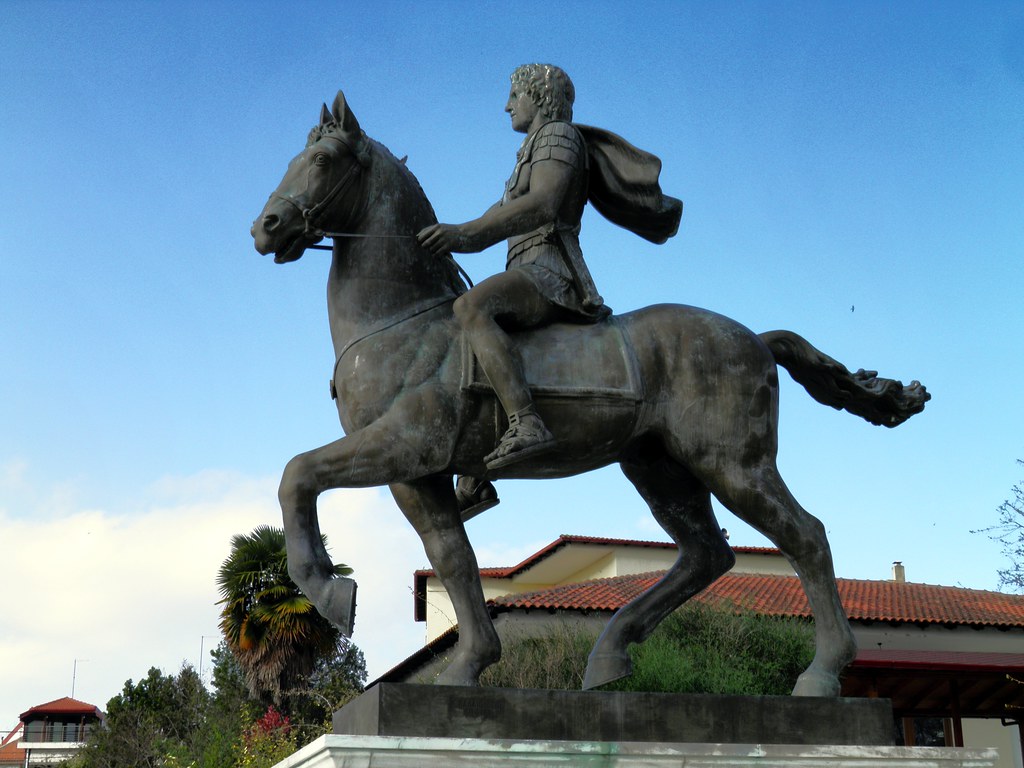
The legendary bond between Alexander and Bucephalus continues to inspire creative works in the modern era, appearing in numerous films, novels, and other media. Oliver Stone’s 2004 epic “Alexander” featured a dramatic recreation of the famous taming scene, introducing a new generation to the story of the young prince and the untamable horse. In literature, Bucephalus has appeared in historical novels by authors ranging from Mary Renault to Steven Pressfield, who often use the horse as a window into Alexander’s character and emotional life. The story has proven particularly popular in children’s literature, with numerous picture books and young adult novels focusing on the taming of Bucephalus as an inspiring tale of patience, insight, and the special bond between humans and animals. Video games set in the ancient world, such as “Assassin’s Creed Odyssey” and strategy titles focusing on Alexander’s campaigns, often feature Bucephalus as a distinctive mount or special unit. The enduring appeal of their story across diverse media demonstrates how this ancient relationship continues to resonate with contemporary audiences, transcending historical distance through its depiction of the timeless bond between human and horse.
Legacy and Symbolism
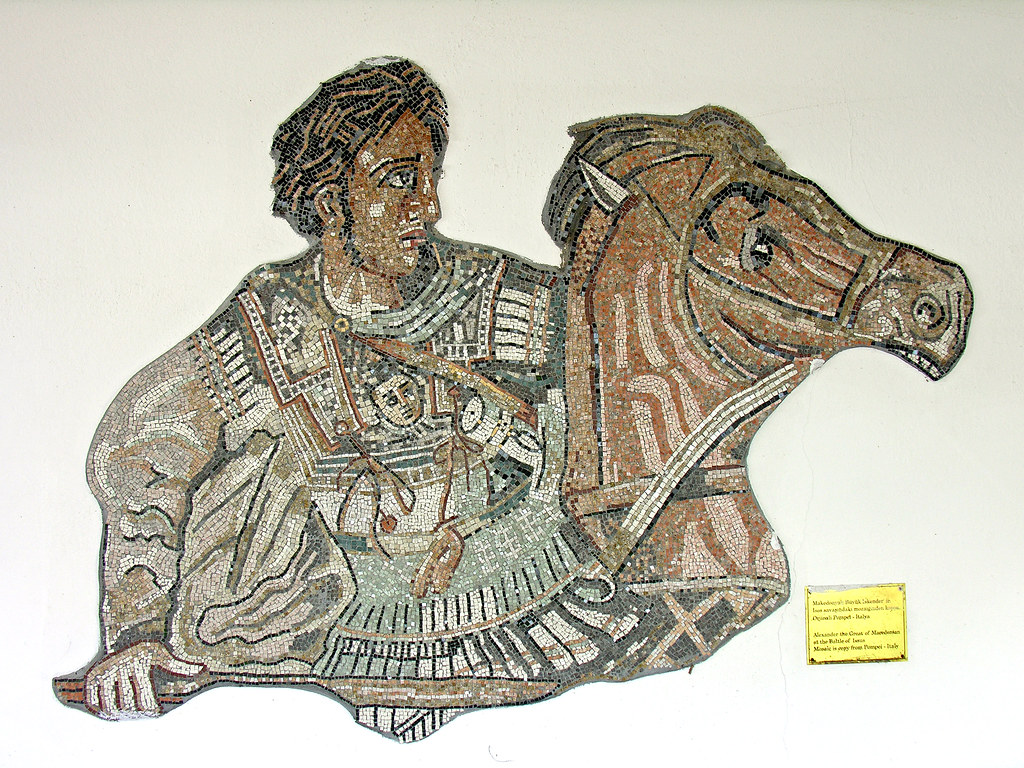
Beyond the historical facts and legends, Bucephalus has endured as a powerful symbol of the extraordinary bond possible between humans and animals. The story of Alexander recognizing what others could not see in the frightened horse represents the importance of empathy and understanding in leadership, a lesson that transcends its ancient origins. In equestrian circles, Bucephalus remains the archetypal warhorse—courageous, loyal, and possessing a special connection with his rider that goes beyond mere training. Military academies and leadership programs sometimes reference the Alexander-Bucephalus relationship when discussing the importance of understanding those under one’s command and recognizing potential where others see only problems. The founding of a city in Bucephalus’s honor established a precedent for commemorating the contributions of animals to human achievements, a tradition that continues with modern memorials to service animals in military, police, and rescue operations. Perhaps most significantly, the story of Bucephalus reminds us that some of history’s most consequential partnerships crossed species boundaries, with animals playing crucial roles in shaping the course of human events through their courage, intelligence, and devotion.
The extraordinary tale of Bucephalus and Alexander the Great stands as one of history’s most enduring examples of the profound bond that can develop between human and horse. From their dramatic first meeting to the founding of a city in the horse’s memory, their story transcends the typical relationship between warrior and mount. For nearly twenty years, Bucephalus carried one of history’s greatest conquerors across thousands of miles and through countless battles, becoming not just a means of transportation but a trusted companion and living symbol of Alexander’s exceptional destiny. Their partnership reminds us that behind the grand narratives of conquest and empire often lie more intimate stories of loyalty, understanding, and mutual trust. As long as people continue to be fascinated by both the glories of the ancient world and the special connections we form with animals, the legend of the black horse with the ox-head mark and the young king who understood him will continue to captivate imaginations and inspire new interpretations across cultures and centuries.

